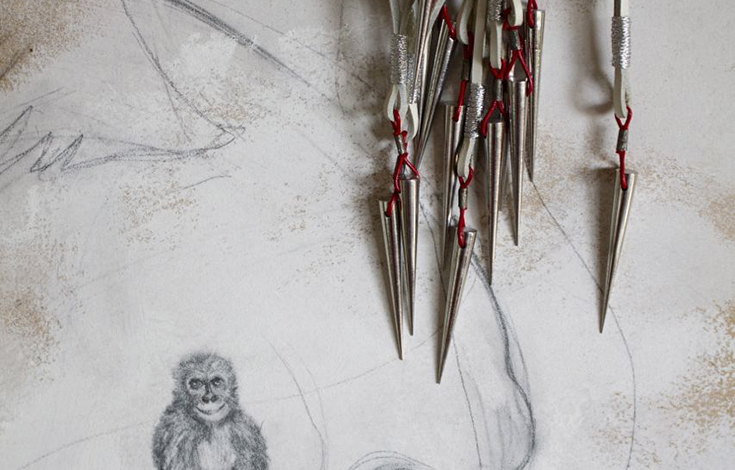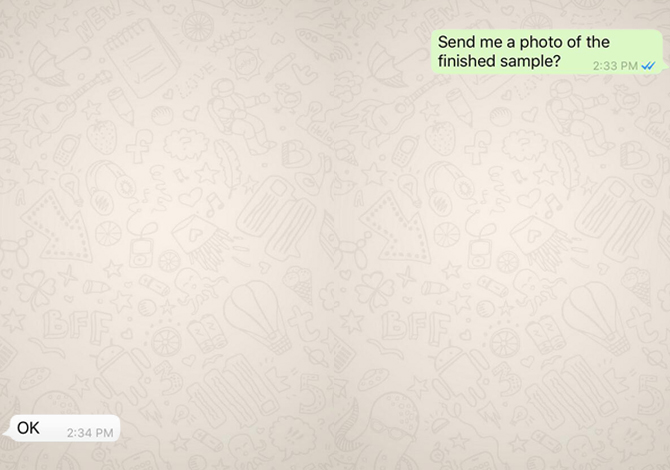You’ll understand when I say that being a Delhiite, Mumbai’s day-to-day happenings don’t hold much interest for me. Unless it’s something really riveting, I’m content to live in my bubble, in the wide-road comforts of Delhi. This was the case, of course, until MumbaiBoss came along. In its fourth year now, MumbaiBoss is to Mumbai what no other news site is to Delhi. Yes, I am jealous that smelly Mumbai possesses a website that promises to ‘make sense of the city’ and delivers.
Nayantara Kilachand is the intrepid founder behind the site that many users swear as their homepage and ultimate city reference. And while I was hooked on their feature, The Vigil Idiot (India’s first comic-strip movie review; it’s hilarious), I would never have imagined her as a serious journalist with stints at NYMag.com and Mint under her belt.
‘Are we going too fast?’ was, and still remains one of the many questions that I ask frequently.
On the other hand, I had, for a while, been trying to make sense of the speed at which fashion was being digitally translated – and created. ‘Are we going too fast?’ was, and still remains one of the many questions that I ask frequently. It’s out there for all to see that the information overload has created a culture of hyperaware humans, and it has been argued that we need to slow down. Slow Fashion is a movement that’s gaining currency right now in the fashion world:
It’s pro-environment and opposed to creating disposable fashion; against trends and fads as we show them in magazines and on the ramp. I asked Nayantara if she thought the same. “YES,” came back her reply. “We’re constantly hurtling through everything. Things rise and die so quickly that it’s enough to give you whiplash sometimes,” she says. And there is, quite probably, a lesson in this for the industry at large, and those hoping to exploit the digital medium in particular. “When I moved back to Mumbai in 2008, there were many listing data-dump websites but nothing informative like NYMag.com, so after working for Mint for a year, I quit to start MumbaiBoss.com. From there, it has definitely changed and evolved. Initially we did a lot more news aggregation, and now it’s more culture and food focused,” she says. Then, as always, the simplicity of the idea made it a winning one. If I were to compare it to art, I’d say it’s a very Bauhaus website: Its form follows its function. Of course, it helps if you, like Nayantara, have previous journalistic experience, and have learned the ropes ‘properly’.
Comparing the quality of content on Mumbai Boss to fashion sites and blogs today makes it clear that there is a serious need of informed editors and writers in the digital space.
Comparing the quality of content on Mumbai Boss to fashion sites and blogs today makes it clear that there is a serious need of informed editors and writers in the digital space. For example, the site does have a fashion and style section, but it isn’t as loaded as the rest of the site. Why? “We don’t have a dedicated fashion/shopping person yet, so we all contribute to it when we can. It’s not as strong as our other sections because of this,” says Nayantara simply. Even so, “after food, it comes second in terms of traffic,” she says, which just goes to show the trust good-quality content can build for a portal. Quantity, it seems, has no role to play here. Whatever their chosen content axis, there is no denying that sites like Mumbai Boss have contributed to a newer way of reporting happenings and disseminating information. “Because of the web, I think print mediums like newspapers and magazines have shifted more to analysis and feature-style reporting. That shift, though, has yet to happen completely in India, but only because old-school mediums are still predominantly the main form of dissemination. You do, though, see that shift on Twitter, where local news in particular – fire outbreaks, etc. – tend to break on the social media platform before they get picked up by the channels and papers.” The recent match-fixing scandal to come out of the IPL is a case in point.
Whatever their chosen content axis, there is no denying that sites like Mumbai Boss have contributed to a newer way of reporting happenings and disseminating information.
As for who’s picking up on Mumbai Boss, the figures give an indication. On Twitter, over 23K (and growing) followers attest to the site’s popularity, while close to 500,000 unique visitors per month join regular subscribers looking for their daily tidbits. However, “getting the content ratio right, tech troubles (server issues, etc), and even just getting the word out that ‘Hey, we exist; Please come visit’” are just the beginning when it comes to niche sites, says Nayantara. The challenges, to use her words, are “too many to enumerate. But finding content – especially during the summer months when the culture calendar slows down – is a big one. We have a great team, so that pretty much ensures we stay different by concentrating on what we do and constantly strive to do better.” And it’s here that the answer lies. To me, they already are better than most. Through simple honesty, integrity, and creating audience-relevant content, sites MumbaiBoss are poised to create amazing equity and become the next trusted source for the everyday reader.
“We sort of skipped over the period when blogging platforms became popular in the US, and went straight to social media platforms like Twitter, Facebook, etc. As a result, we don’t have nearly enough blogs and websites as we ought to” – Nayantara
Would you say that your readers defined your identity, or vice versa?
I think it’s more that we evolved our identity and our readers took to it, which sort of affirmed we were on the right path, if that makes sense.
What’s your take on the “information versus knowledge” argument between the print and digital mediums? Does any such difference exist, even?
There is obviously a lot of incorrect information floating about, particularly on the web, where it becomes near impossible to control what’s being disseminated. I don’t think print is immune to misinformation though, but by virtue of having a slightly delayed copy-to-publish cycle, there tend to be more filters and more chances to catch errors. I think that’s changing slowly, as the kind of quality control traditionally seen on print mediums is now being used even with a lot of blogs, particularly in USA.
Are there any areas in which you feel the digital space in India is lacking? Anything that traditional media is better at?
Yes, there are plenty of areas. We sort of skipped over the period when blogging platforms became popular in the US, and went straight to social media platforms like Twitter, Facebook, etc. As a result, we don’t have nearly enough blogs and websites as we ought to. As for traditional media being better, I don’t think it’s a question of one versus the other. Both should be used to enhance the other. For example, a print layout, say of photographs, can look stunning in a magazine, but can be adapted for the web so it becomes an interactive slideshow.
What are your takeaways, your learning?
Adapt and evolve. If something isn’t working, don’t cling to it because you thought it was a great idea.
_________________
Varun Rana is Fashion Features Director at Harper’s Bazaar India. Nayantara Kilachand is the Founder of Mumbaiboss.




